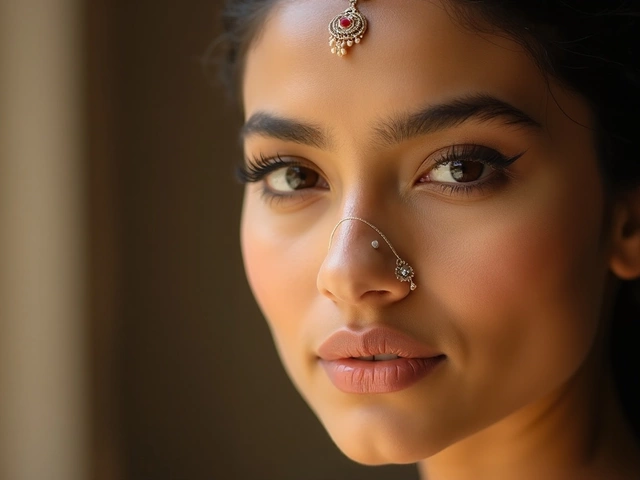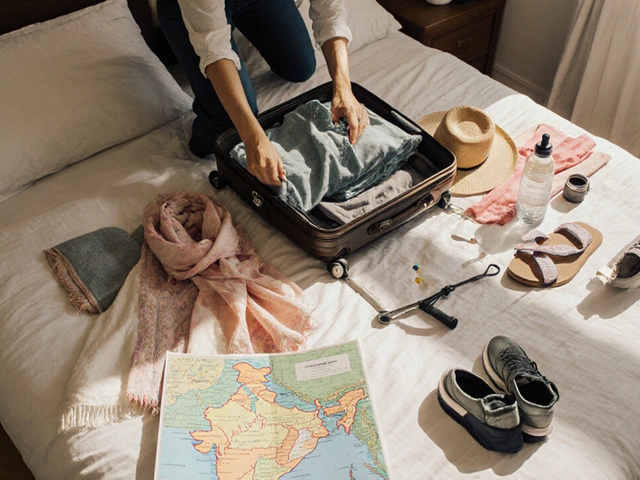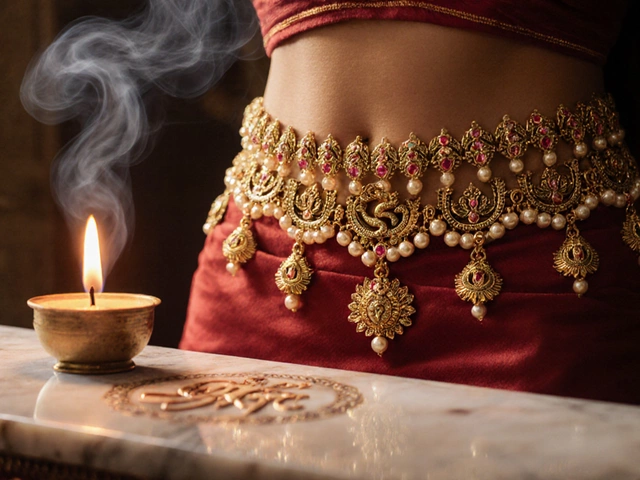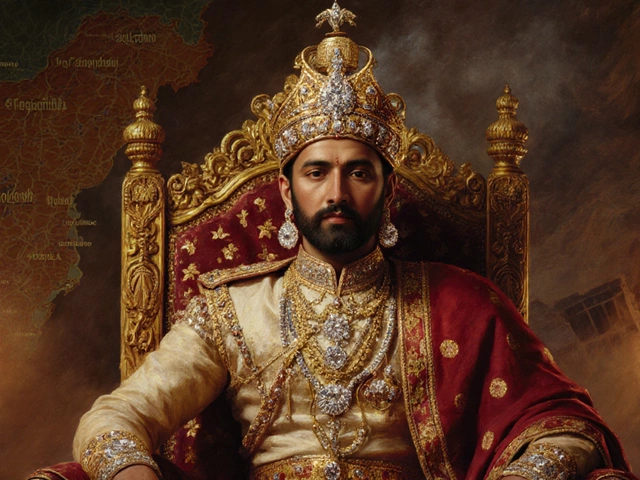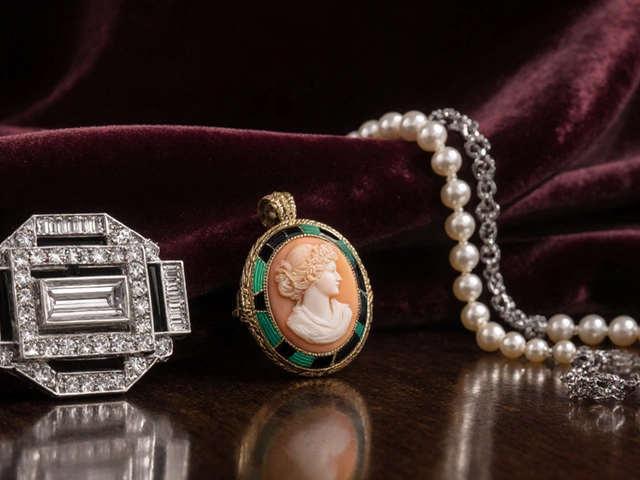
Buying a mangalsutra is a lot more complicated than just picking out a nice chain with black beads. There's this big question: Who actually opens their wallet for it? The answer isn't the same everywhere. Some families stick to tradition, others go with what makes more sense for them. If you're getting married—or even if you're just nosey like me—you'll see that the mangalsutra story is full of twists.
Here's the real scoop: in many regions, the groom's family usually buys the mangalsutra. But this isn't a strict rule everywhere. In some places, it's the bride's side or even the couple themselves. Money, personal preference, and family customs all come into play. Throw in mixed-culture weddings or couples who want something modern, and you can toss the old rulebook in the bin. Wondering how all this really works? Hang tight—there's more to this than meets the eye.
- Origins of the Mangalsutra Purchase
- Modern Couples: Who Pays and Why
- Design Preferences and Family Choices
- Shopping Tips You’ll Wish You Knew Earlier
- Myths, Surprises, and What Really Matters
Origins of the Mangalsutra Purchase
The history behind who buys the mangalsutra is actually pretty layered. This famously important wedding necklace started getting serious attention centuries ago in India. Back then—and still today in lots of places—the mangalsutra isn’t just any accessory. It’s a symbol of marriage, a sign of commitment, and, honestly, a bit like a wedding ring for South Asian brides.
Traditionally, it’s the groom’s family who takes charge of the mangalsutra purchase. Why? It’s tied to the idea that the husband promises to look after his wife, and the mangalsutra is the first step in showing that promise. But don’t get stuck thinking this rule is set in stone. Different regions and communities do it their own way. For example, in states like Maharashtra or Gujarat, it’s almost always on the groom’s side. But in Tamil or Telugu families, sometimes the bride’s parents pay for it as part of their wedding gift.
What’s interesting is that these traditions didn’t just pop up for fun. They’re shaped by old cultural rules, local customs, and sometimes even how much bling the families want to showcase. Wedding expenses can get seriously detailed. Check out how it can break down in some families:
| Region | Who Usually Buys |
|---|---|
| Maharashtra | Groom's Family |
| Karnataka | Groom's Family |
| Tamil Nadu | Bride's Family (sometimes shared) |
| Gujarat | Groom's Family |
| Punjab | Bride's Family or Joint Gift |
Why does this matter? If you’re from a family that sticks close to tradition, you’ll probably follow what your parents (and grandparents) did. But things are changing, mostly because younger couples like to keep stuff fair and avoid complications about money.
Knowing who buys the mangalsutra isn’t just trivia—it can help you avoid awkward conversations and surprises during wedding planning. Understanding these origins can give you a leg up when you’re figuring out your own plan, especially if your family comes from different states or backgrounds.
Modern Couples: Who Pays and Why
The old rule that the groom’s side pays for the mangalsutra looks pretty shaky these days. Couples are mixing things up, for all sorts of reasons. Some pay because it feels fair, some split the bill, and some stick with tradition because their families care about it. I’ve seen friends on both sides of the story—and honestly, it’s all over the place.
Here’s something practical: in cities like Mumbai and Bangalore, nearly half the couples buy the mangalsutra together or split the cost. It’s about making shared decisions, not just following family history.
| Who Pays? | Approximate Percentage |
|---|---|
| Groom’s Family | 38% |
| Bride’s Family | 14% |
| Couple Together | 48% |
Where did those numbers come from? A 2023 survey by a top Mumbai jeweler asked over a thousand recently married couples about how they handled the mangalsutra purchase. That’s not a small sample size. Interesting, right?
Why is this happening? The biggest reasons are simple:
- Both the bride and groom want a say in the mangalsutra design (goodbye bland gold, hello diamonds, creative patterns, and matching couple styles).
- Couples are often paying for their own weddings—so why not the mangalsutra, too?
- Some families want to share costs, to avoid any one side feeling overburdened.
- People care less about “who pays” and more about making sure everyone is comfortable.
Here’s a quote from jewelry designer Ananya Malhotra:
"More couples want their mangalsutra to be personal. I see them coming together to select and pay for it, treating it as their first major investment as a team."
So, if you’re worried about who pays, it’s honestly about what works for you and your family. No wedding police will show up, promise. The main thing is to talk openly and agree on what feels right.
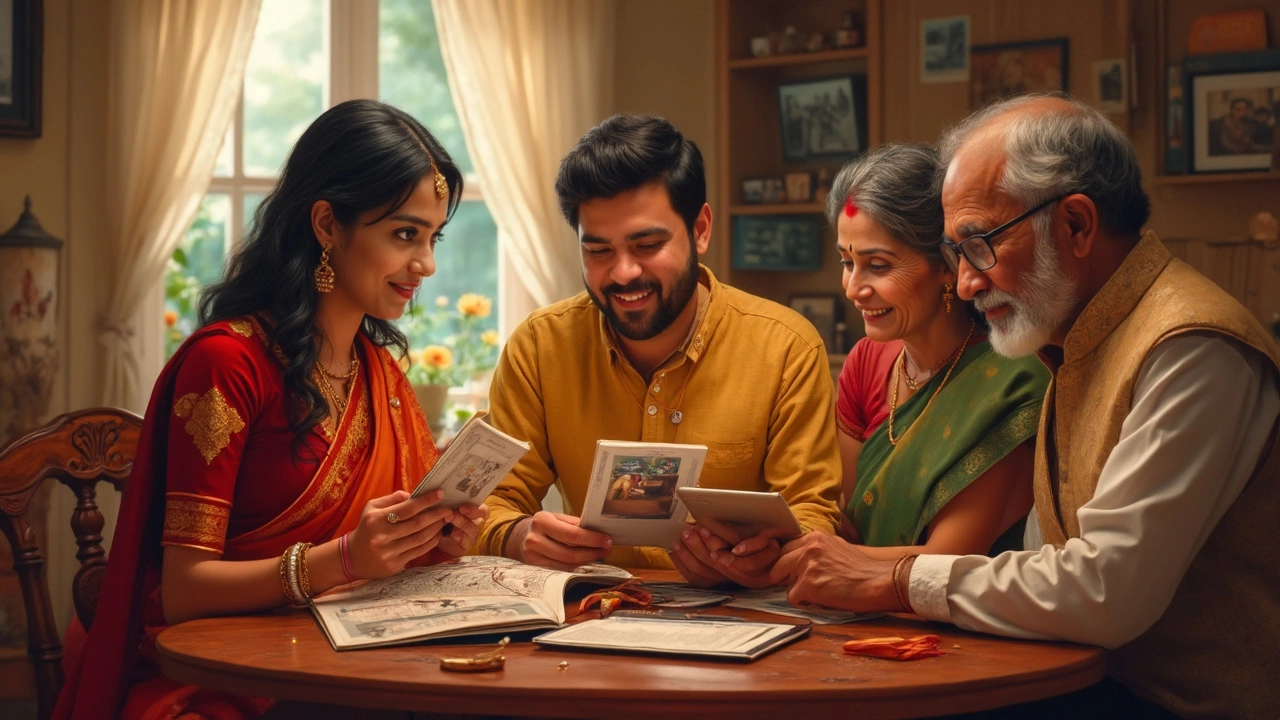
Design Preferences and Family Choices
Now comes the tricky part—agreeing on which mangalsutra design hits the sweet spot for everyone involved. In most Indian families, this piece isn’t just jewelry. It’s packed with meaning, and grandma’s opinion often holds as much weight as the bride’s own taste.
Take states like Maharashtra or Tamil Nadu, for example. Locals usually stick to classic patterns: a simple black-bead chain with maybe two gold vatis for Maharashtrians or an intricate Thaali for Tamils. In the north, you might find fancier, diamond-studded pendants making their appearance. Each community puts its own spin on it. Some families insist on buying only traditional styles, believing it brings good luck. Others are cool with new-age designs that you’ll actually enjoy wearing every day.
Here’s what usually shapes the final call on who buys the mangalsutra and which design gets the green light:
- Family customs: Some families want to gift a style that’s been passed down for generations. They’ll pick the jeweler, the pattern, and probably want some matching earrings thrown in too.
- Bride’s say: More couples are doing shopping together, with brides picking out what actually matches their vibe. Minimalist gold? Big flashy pendant? Simple, practical, or office-friendly? It’s all up for grabs.
- Budget: Not every family can (or wants to) shell out for heavy gold or diamonds. Couples sometimes set a budget and go design-hunting within that limit.
Some jewelers recently reported that almost 40% of their mangalsutra sales are now “custom designs,” not the set pieces that parents or in-laws would traditionally pick. That’s a sign things are shifting and more voices—especially the bride’s—are being heard.
If you’re about to go mangalsutra shopping with your partner or the whole family, try this: make a wishlist of must-haves, nice-to-haves, and total dealbreakers. Then, check what local traditions expect. You’ll save everyone a lot of back-and-forth if you walk in with your priorities sorted out.
Shopping Tips You’ll Wish You Knew Earlier
If you're about to shop for a mangalsutra, don't just walk into the store and grab the first design that catches your eye. Here’s how to make sure you actually love what you end up with and avoid rookie mistakes that can burn a hole in your wallet.
- Set your budget first. Mangalsutras range from simple gold chains to full-on diamond-loaded stunners. Decide—together or with your families—how much you actually want to spend. It’s easy to get talked into more once you’re at the shop.
- Figure out who gets a say. Some couples want the surprise or the tradition, while others want to decide every detail. If both sides of the family are involved, decide who’s paying and who’s picking before you start shopping.
- Try before you buy. Different mangalsutra designs can look way better (or worse) when worn. Don’t just look at catalog pictures—try them on in person. You don't want to realize at your own wedding that it doesn't match your vibe.
- Ask for the purity mark. Check the jewelry for hallmark certification, especially if you’re spending big. No one wants to discover later that the gold isn’t as pure as promised. For Indian gold, look for the BIS hallmark.
- Think about daily wear. Are you going to wear your mangalsutra every day or just on special occasions? Pick a design that isn't going to snag on your outfits or feel bulky at work.
Here’s a typical price range you’ll see for popular mangalsutra styles these days:
| Design Type | Average Price (INR) |
|---|---|
| Simple Gold | 15,000 - 50,000 |
| Gold with Diamonds | 40,000 - 2,00,000 |
| Designer/Heavy | 60,000 - 5,00,000+ |
Don’t be shy about haggling, especially in local markets. But also compare prices online. Jewelers love to throw in free gifts or discounts during festive seasons—ask what’s available. And, honestly, bring someone you trust. In my case, Miranda has a way sharper eye for value than I do, and having her along has saved us more than once.
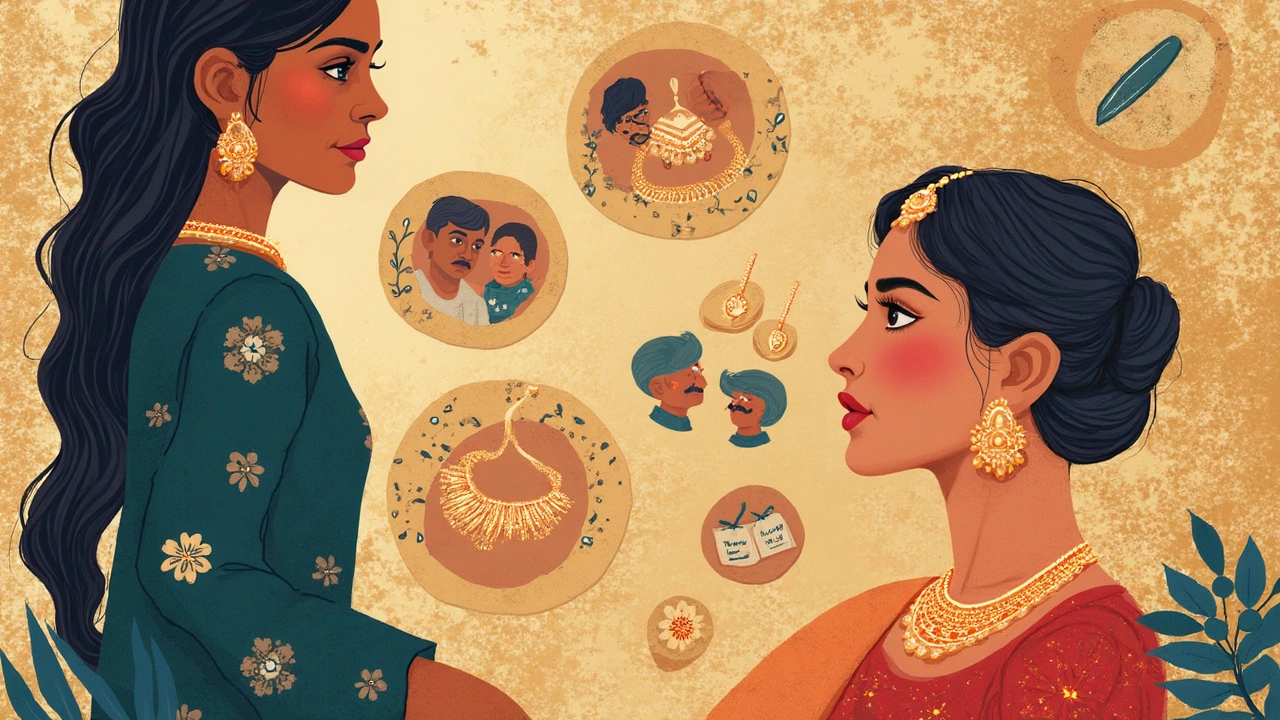
Myths, Surprises, and What Really Matters
If you ask five families about the mangalsutra, you’ll probably get five different versions of “how it’s supposed to go.” Honestly, half the confusion comes from old myths that don’t match real life anymore.
One classic myth? The groom’s side always foots the bill, and anything else is wrong. Fact is, in some parts of India—like Maharashtra, Odisha, and Karnataka—it’s pretty normal for the bride’s family to handle the expense, especially if the design is specific or more expensive than usual. In mixed-community marriages, couples often choose to split costs or just buy it together to keep things simple. Nobody talks about it on Instagram, but it happens plenty.
Another big surprise: Most jewelers say couples these days actually walk in together and pick out the mangalsutra design as a team. In a survey by a popular Indian wedding planning site in 2023, 62% of couples reported shopping for wedding jewelry together—including the mangalsutra. Traditions can change fast, right?
| Who Buys the Mangalsutra? | % of Respondents (2023 survey) |
|---|---|
| Groom's Family | 35% |
| Bride's Family | 27% |
| The Couple Together | 30% |
| Someone Else (Siblings, Relatives) | 8% |
Let’s clear the air on something else: you don’t need to go for the heaviest, most traditional style if it doesn’t fit your or your partner’s vibe. The mangalsutra is meant to be personal. Sometimes couples even choose minimal or customized styles so it actually gets worn daily, not just locked up after the wedding day.
- Don’t get caught up in “has to be gold only.” Diamond and mixed-metal mangalsutra designs are totally acceptable now—no elders showing up to riot.
- There’s no shame in openly discussing your budget. If a classic design costs more than you’re willing to spend, speak up early. Tons of jewelers help couples create a design within their budget.
- If both sides are chipping in, clarify payment details to avoid confusion or awkward chats later.
Forget the buzz about who’s supposed to buy it—what really matters is that the mangalsutra design means something to the people wearing it. Personal connection, comfort, and wearability usually matter more than some old rule nobody follows anymore.



